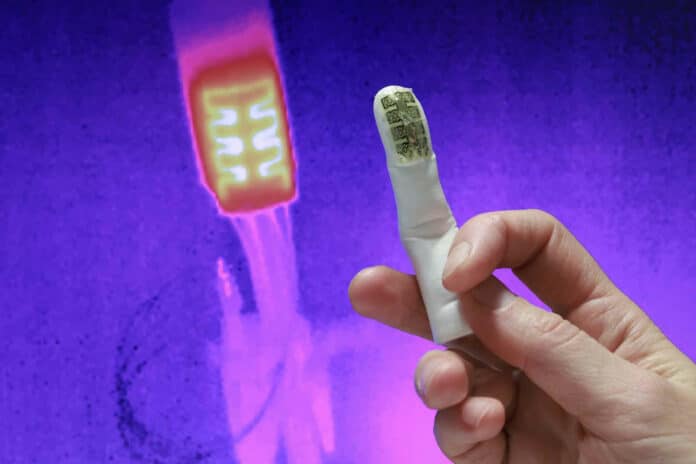Recent advances in prosthesis development for upper-limb amputees have shown that it is possible to restore touch sensation using different approaches. However, current technologies do not allow the restoration of thermal sensation.
To provide upper-limb amputees with a more natural feeling, researchers from Switzerland’s Ecole Polytechnique Fédérale de Lausanne (EPFL) have developed a new bionic technology that allows amputees to sense the temperature of objects – both hot and cold – directly in the phantom hand. The technology opens up new avenues for non-invasive prosthetics.
“Temperature feedback is essential for relaying information that goes beyond touch; it leads to feelings of affection. We are social beings, and warmth is an important part of that,” says Micera, Bertarelli Foundation Chair in Translational Neuroengineering, professor at EPFL and SSSA who also co-led the study. “For the first time, after many years of research in my laboratory showing that touch and position information can be successfully delivered, we envisage the possibility of restoring all of the rich sensations that one’s natural hand can provide.”
For their study, researchers created a non-invasive device called MiniTouch, which provides thermal feedback about the object being touched and is specifically built for integration into wearable devices like prosthetics.
The MiniTouch consists of a thin, wearable sensor that can be placed over an amputee’s prosthetic finger. The finger sensor detects thermal information about the object being touched, more specifically, the object’s heat conductivity. If the object is metallic, it will naturally conduct more heat or cold than, for instance, a plastic one.
A thermal electrode, also known as thermodes, is placed in contact with the skin on the amputee’s residual arm. It heats up or cools down, relaying the temperature profile of the object being touched by the finger sensor.
Researchers recruited more than 25 volunteers in less than two years for the trials. The technology was successfully tested in 17 out of 27 patients.
“Of particular importance is that phantom thermal sensations are perceived by the patient as similar to the thermal sensations experienced by their intact hand,” explains Shokur, EPFL senior scientist neuroengineer who co-led the study.
The technology could be integrated into wearable devices, such as prosthetics, in the future to provide a more realistic touch to amputees.
Journal Reference:
- Francesco Iberite, Jonathan Muheim, Outman Akouissi, Simon Gallo, Giulio Rognini, Federico Morosato, André Clerc, Magnus Kalff, Emanuele Gruppioni, Silvestro Micera, Solaiman Shokur. Restoration of natural thermal sensation in upper-limb amputees. Science, 2023; DOI: 10.1126/science.adf6121
